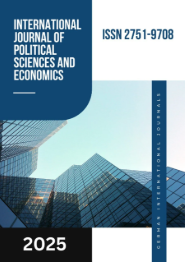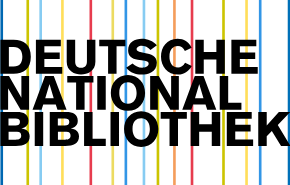COMPARATIVE EFFECTIVENESS OF LASER REFRACTIVE SURGERY FOR HYPEROPIA: LASIK, FEMTO-LASIK, PRK, AND SMILE
DOI:
https://doi.org/10.55640/Abstract
Hypermetropia, or farsightedness, remains a significant global health concern affecting adult populations. Laser refractive surgery has emerged as a pivotal treatment option, with several techniques—LASIK, Femto-LASIK, PRK, and SMILE—demonstrating varying degrees of efficacy and safety.
References
1.Solomon, K. D., Fernández de Castro, L. E., Sandoval, H. P., Biber, J. M., Groat, B., Neff, K. D., Ying, M. S., French, J. W., Donnenfeld, E. D., Lindstrom, R. L., & Joint LASIK Study Task Force. (2009). LASIK world literature review: Quality of life and patient satisfaction. Ophthalmology, 116(4), 691–701.
2.Jaycock, P. D., O'Brart, D. P., Rajan, M. S., & Marshall, J. (2005). 5-year follow-up of LASIK for hyperopia. Ophthalmology, 112(2), 191–199.
3.Chang, Jin-Yua; Lin, Pei-Yua,b; Hsu, Chih-Chiena,b,*; Liu, Catherine Jui-Linga,b. Comparison of clinical outcomes of LASIK, Trans-PRK, and SMILE for correction of myopia. Journal of the Chinese Medical Association 85(2):p 145-151, February 2022.
4.Reinstein, D. Z., Sekundo, W., Archer, T. J., Stodulka, P., Ganesh, S., Cochener, B., Blum, M., Wang, Y., & Zhou, X. (2022). SMILE for hyperopia with and without astigmatism: Results of a prospective multicenter 12-month study. Journal of Refractive Surgery, 38(12), 760–769.
5.Almutairi, M. N., Alshehri, A. M., Alhoumaily, A. Y., Alnahdi, O., Taha, M. A., & Gangadharan, S. (2025). Meta-analysis: clinical outcomes of laser-assisted in situ keratomileusis (LASIK) and photorefractive keratectomy (PRK) in hyperopia. BMC ophthalmology, 25(1), 140.
6.Asroui, S., Torbey, P., Ahmed, N., Fattah, M., Koaik, D., Awwad, S., & Arba-Mosquera, S. (2023). Long-term results of hyperopic ablations using alcohol-assisted PRK and femtosecond LASIK: Comparative study. Journal of Cataract & Refractive Surgery, 49(3), 266–273.
7.Almutairi, M. N., Alshehri, A. M., Alhoumaily, A. Y., Alnahdi, O., Taha, M. A., & Gangadharan, S. (2025). Clinical outcomes of LASIK and PRK in hyperopia: A systematic review and meta-analysis. BMC Ophthalmology, 25(1), Article 140.
8.Tăbăcaru, B., Stanca, H. T., Pîrvulescu, R.-A., Stanca, S., Brînzaru, D., & Preda, M. (2021). Femtosecond-LASIK outcomes using the VisuMax®-MEL® 80 platform for hyperopia and hyperopic astigmatism refractive surgery. Romanian Journal of Ophthalmology, 65(1), 9–16. (PMCID: PMC7851669)
9.Abdel-Radi, M., Rateb, M., Saleh, M. G. A., & Aly, M. O. M. (2023). Twelve-month outcomes of single-step transepithelial PRK for moderate hyperopia and hyperopic astigmatism. Eye and Vision, 10, Article 7.
10.Saad, A., Steinberg, J., & Frings, A. (2025). Stability of refractive outcomes after hyperopic LASIK with and without Mitomycin C application: A randomized controlled trial. Scientific Reports, 15, Article 961.
11.Shen, Z., Shi, K., Yu, Y., Yu, X., Lin, Y., & Yao, K. (2016). SMILE versus femtosecond LASIK for myopia: A systematic review and meta-analysis. PLOS ONE, 11(11), e0158176.
12.Chang, J.-Y., Lin, P.-Y., Hsu, C.-C., & Liu, C. J. (2022). Comparison of LASIK, trans-PRK, and SMILE for correction of myopia: Mechanisms, pros, and cons. Journal of the Chinese Medical Association, 85(2), 145–151.
13.Balgos, M. J. T. D., Piñero, D. P., Canto-Cerdán, M., Alió del Barrio, J. L., & Alió, J. L. (2022). Comparison of the cost-effectiveness of SMILE, FS-LASIK, and PRK for myopia in a private eye center in Spain. Journal of Refractive Surgery, 38(1), 21–26.
14.Shen, Z., Shi, K., Yu, Y., Yu, X., Lin, Y., & Yao, K. (2016). Small Incision Lenticule Extraction (SMILE) versus Femtosecond Laser-Assisted In Situ Keratomileusis (FS-LASIK) for Myopia: A Systematic Review and Meta-Analysis. PloS one, 11(7), e0158176.
Downloads
Published
Issue
Section
License

This work is licensed under a Creative Commons Attribution 4.0 International License.
Authors retain the copyright of their manuscripts, and all Open Access articles are disseminated under the terms of the Creative Commons Attribution License 4.0 (CC-BY), which licenses unrestricted use, distribution, and reproduction in any medium, provided that the original work is appropriately cited. The use of general descriptive names, trade names, trademarks, and so forth in this publication, even if not specifically identified, does not imply that these names are not protected by the relevant laws and regulations.







